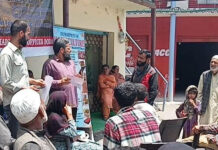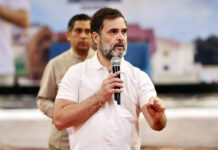Prof. (Dr.) Manoj S. Kamat
November 19 was a frenzied moment for all of us across all walks of life to come together in support of the Indian team playing against the Aussies at the Cricket World Cup 2023 (CWC23) finals. Though the results of the concluding match were depressing the overall experience was truly thrilling and spectacular.
India had earlier hosted the CWC in 2011. The current event comes at a point when the global spotlight is shining bright and after the successful organisation of the G20 summit. The CWC23 broke all broadcast and digital viewership records.
All the 48 matches across 10 cities during the CWC23 achieved a peak spectator concurrency of over 1.25 million fans, while the digital viewership of 59 million viewers from the stands beat all previous records of any other ICC event. Apart from its sporting excellence, the event saw the ignition of incredible passion among the fans. More importantly, the event comes as an economic booster.
Economists at the Bank of Baroda (BoB) believe that the CWC23 will add up the equivalent of22,000 crore to India’s economy, while the most conservative calculation by the BQ Prime report puts it at approximately13,500 crore. As per the BoB, around 12,000 crore will come only through the TV broadcasting rights, and around1,500 crore as sponsorship revenue with global corporates spending about $3600 per second. The Bank also reported a prediction of a 0.15-0.25% inflation indicating an expansion of demand during October and November, thanks to the event euphoria. Restricted to cricket, hosting major sporting events like the Olympics, FIFA Cup and Formula One Grand Prix have always represented an economic opportunity promising diverse advantages. The organisation of the $220 billion grand sporting event FIFA World Cup 2023 by Qatar can be linked to the expansion of its economy by 8% on an annual basis in the fourth quarter of last year as per the S&P Global Market Intelligence. The successful hosting of this event last year boosted investors’ interest in Qatar leading it to fourth rank in a list of top 25 emerging markets globally in Kearney’s 2023 Foreign Direct Investment Confidence Index. Further, Qatar’s neighbouring Dubai real estate market has recorded a positive impact of FIFA.
Ranging from the record sale of stadium tickets, infrastructure and stadium renovations, boost to domestic/international travel, logistics, the informal sector, food and beverages, revenues to hotels and restaurants, memorabilia and merchandise, ancillary tourism, advertising, broadcasting rights, and sponsorship, a load of revenue was earned by the Indian economy in the course of the CWC23. With many team and individual records from the earlier editions of the CWC beaten, the new milestones were set bringing revenues of billions of dollars to the host economy. Based on data for the past two World Cups, an average of 20% of the visitors are international and 40% each are Indians from outside and within the home city. The excitement along with heavy footfalls for the matches is directly linked with an immediate economic activity with a lot of multiplier impact accruing in the months to come. It is estimated that the average spend per attendee at the stadium in the home city is around 7,500 each for an inter-state attendee is30,000, while for a foreign spectator from the participating countries is approximately 2 lakh each from which over half is spent on tourism. The highest body of Cricket in India, the BCCI is estimated to earn a substantial revenue pie of about 40% approximating $230 million per year from the ICC’s projected annual net earnings of $600 million from 2024 to 2027. The spending on digital advertising has doubled compared to the last World Cup. India matches on Disney+Hotstar were able to attract the highest ad-spend of950 crore which is 20-25 per cent higher for the last IPL, while it has been able to garner `2,300 crore from TV and digital spending. On aggregate, it is believed that India’s ad expenditure will see a positive impact of 2.5 per cent in 2023, and its growth in the second half of 2023 is estimated at 14 per cent versus the four per cent growth recorded in the first half of the year.
The FMCG sector specifically the perfumes/deodorant, beauty goods, pan masala, the consumer durables sector and online shopping took the lead in aggressively marketing their products followed by Pan Masala and online shopping. This sector targeted the strong consumer presence in the viewers specifically targeting the middle-income, semi-urban and rural markets and is expected to give a lift to the economy in the December quarter given that the CWC23 coincides with Diwali followed by Christmas.
Flight searches to India surged between 110% to 130% in the months leading up to the CWC23 as per the data from OTA Insights, a market intelligence platform while according to travel analytics firm Cirium, there were as many as 800 flights scheduled from November 13 to 19 to Ahmedabad owing to the finals played in the city. The demand for international flights to India surged by 15% due to travellers from Australia, the UK, New Zealand, Sri Lanka and the Netherlands.
The data from software firm RateGain showed that hotel rates in host cities increased up to 300% year-on-year in the October to November period. The hotels in Ahmedabad experienced a 310% rise, while the tariff surge was the highest in Pune almost by 360%, where India played against Bangladesh. Ticketholders, who flew into Ahmedabad for the match, even resorted to booking medical hospitals so they had somewhere to stay.
The equity market has and will continue to witness positive activity events with the stocks of sectors associated with travel, tourism, hotels, food, and beverages projected to benefit. The tournament will also support Indian government coffers through tax buoyancy giving more fiscal space to the finance ministry.
Though our Indian cricket team was not lucky enough to lift the coveted trophy we all desired, the organisation of the CWC23 gifted us with a unique opportunity for brand promotion and boosting domestic consumption. Given the economic shot, the cricketing journey from October until the recent finals has been well-rewarding for India.
(Prof. (Dr.) Manoj S. Kamat is Post Doctoral Fellow (Economic Policy) and PhD. (Finance) from IIT Bombay, and serves as Professor and Principal of Dempo Charities Trust’s SS Dempo College of Commerce & Economics
at Cujira-Bambolim).




























